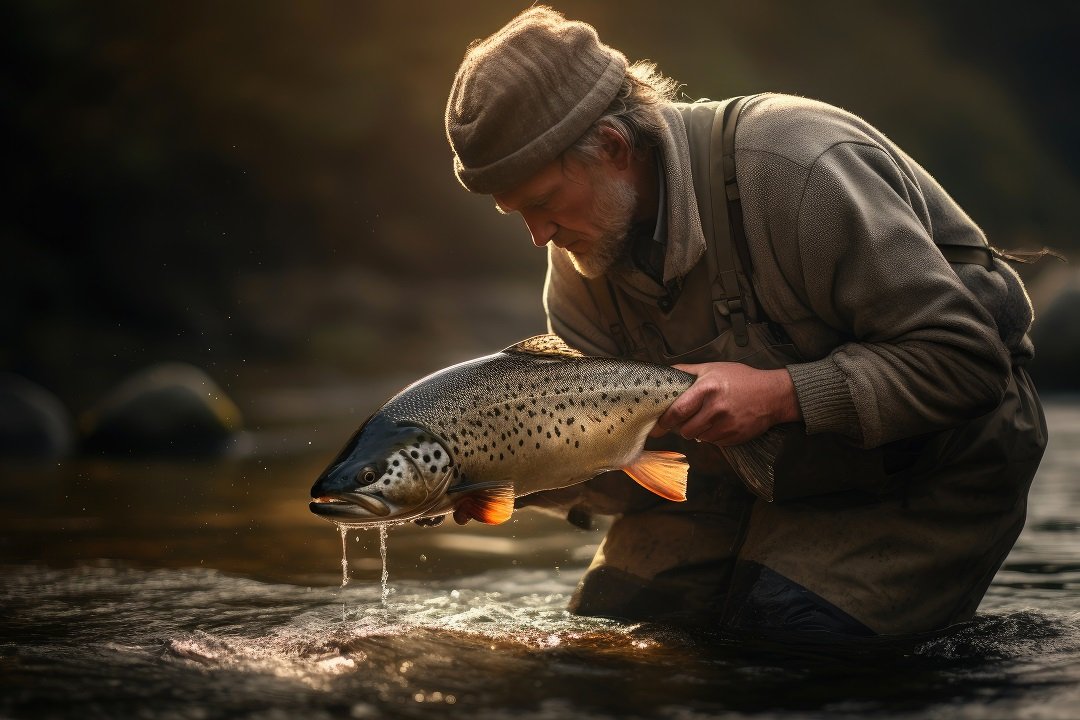Fish batter is the cornerstone of an irresistible fried fish meal. Whether you’re preparing a casual dinner or a feast for friends, mastering the fish batter basic recipe can make all the difference in achieving that perfect crispy, golden texture. The secret lies in simplicity—using just a few key ingredients to create a light, crispy coating that complements the fish without overpowering its natural flavors.
If you’ve ever wondered how to make the ideal fish batter for frying, you’ve come to the right place. This guide will walk you through everything you need to know about fish batter basics: from the ingredients to the techniques, equipment, and tips for making the most of this essential recipe. Along with some expert advice on precautions to take when frying, we’ve got you covered to help you create restaurant-quality fish right in your own kitchen.
What Is a Fish Batter?
Fish batter is the coating that envelops fish fillets before they are deep-fried or pan-fried. Its main purpose is to create a crispy, crunchy texture that contrasts with the tender, flaky fish inside. The right batter enhances the fish’s flavor while providing a satisfying crunch without becoming greasy or soggy.
A fish batter basic typically consists of flour, water (or beer for extra crispiness), and a touch of salt. Some variations include baking powder for extra puffiness, cornstarch for crunch, or spices and herbs for flavor. The batter should be thick enough to stick to the fish but thin enough to fry up crispy.

Basic Fish Batter Recipe
Here’s a simple, foolproof fish batter basic recipe to get you started:
Ingredients:
- 1 cup of all-purpose flour
- 1/2 teaspoon of salt
- 1/2 teaspoon of baking powder
- 1/2 cup of cold water (or beer)
- 1 tablespoon of cornstarch (optional, for extra crunch)
- A pinch of black pepper (optional)
Instructions:
- In a large bowl, mix the flour, salt, baking powder, and cornstarch (if using).
- Gradually whisk in the cold water (or beer) until the batter reaches a smooth, lump-free consistency. The batter should coat the back of a spoon but still be light and airy.
- Heat your oil to 350°F (175°C) in a deep fryer or large skillet.
- Dip your fish fillets into the batter, ensuring they are completely coated.
- Fry the fish in batches, making sure not to overcrowd the pan. Cook for 3-4 minutes or until golden brown and crispy.
- Remove the fish from the oil and drain on paper towels. Serve immediately.
This fish batter basic can be customized by adding your preferred spices or using sparkling water instead of regular water for a lighter, airier batter.
Planning Your Fish Frying Adventure
Before diving into the fish batter, it’s essential to plan out your frying process. The key to a successful fish fry lies in preparation. First, ensure you have the right equipment and ingredients. Then, consider the type of fish you’ll be using and how you’ll handle the frying process.
Choosing the Right Fish for Frying
Not all fish are created equal when it comes to frying. Some fish are naturally delicate and may break apart during the frying process, while others have a firmer texture that holds up well to battering and frying.
- Best Choices: Cod, haddock, tilapia, and pollock are all great options for frying, thanks to their firm texture and mild flavor.
- Avoid: Delicate fish like sole or flounder, which may fall apart in the oil.
You’ll also want to consider whether you’re using fresh or frozen fish. Fresh fish is ideal, but frozen fish works too. Just make sure it’s fully thawed and patted dry before dipping into the batter.
Preparation Tips for Frying Fish
- Pat dry your fish fillets: Wet fish won’t hold batter well, so make sure your fillets are completely dry before dipping them into the batter.
- Prep your frying area: Clear the cooking space of any obstacles. Have your oil heated and ready to go, and ensure you have a slotted spoon or tongs for easy removal of the fish.
- Keep the fish warm: If you’re frying multiple pieces, set your oven to 200°F (90°C) to keep the fish warm while you finish cooking the rest.
Timing Is Key
The key to perfect fried fish is timing. Overcooking can result in a dry fish, while undercooking can leave it soggy and greasy. Typically, frying fish fillets takes 3-4 minutes, depending on the thickness of the fillet. A quick, crispy exterior with a tender, flaky interior is what you’re aiming for.

Essential Equipment for Frying Fish
When frying fish, having the right equipment is critical for achieving that perfect crunch. The essential tools for a flawless fish batter experience include:
- Deep Fryer or Heavy Pot: A deep fryer or a heavy pot like a Dutch oven ensures your oil stays at a constant temperature, leading to even cooking.
- Thermometer: To maintain the correct frying temperature (around 350°F or 175°C), a thermometer is an indispensable tool.
- Slotted Spoon or Tongs: These are used to carefully remove the fish from the oil once it’s fried to perfection.
- Paper Towels or Cooling Rack: To drain excess oil from the fish, ensuring it stays crispy.
If you’re serious about frying fish, you may also want to invest in a deep fryer thermometer for better precision.
Destination: Where to Find the Best Ingredients for Your Fish Batter
Finding fresh, quality ingredients can make a big difference in the end result of your fish batter. Here’s where you should look for the best options:
Fish Markets
A visit to your local fish market is the best way to get fresh fish. Ask for advice from the fishmonger on what’s in season, and don’t hesitate to ask for fillets that are perfect for frying.
Grocery Stores
If a fish market isn’t an option, many well-stocked grocery stores carry high-quality frozen fish. Look for options labeled as “wild-caught” for better flavor and texture.
Specialty Stores for Ingredients
For the perfect fish batter, visit specialty stores to find high-quality flour, cornstarch, and baking powder. Some brands offer products specifically designed for frying, like tempura flour or batter mixes that can elevate your fish frying game.
The Benefits of a Basic Fish Batter Recipe
There are many benefits to mastering a fish batter basic. A few of the key advantages include:
Simplicity and Versatility
The beauty of a fish batter basic is that it’s simple and adaptable. You can tweak it to your taste, adding herbs, spices, or even a splash of your favorite beverage (like beer or sparkling water) for a unique twist.
Crispy Texture
The batter provides the perfect crispiness that complements the soft, flaky fish inside. You get the perfect texture contrast that makes each bite a delight.
Healthy Eating Option
Using the right amount of batter ensures a lighter, crispier coating, reducing the greasy feeling that sometimes comes with fried food. Paired with a healthy side, fish battered with the right recipe can make for a nutritious meal.
Cost-Effective
With just a few simple ingredients like flour and baking powder, a basic batter is incredibly affordable. Plus, it works for any type of fish, making it a cost-effective option for feeding a crowd.

Precautions When Frying Fish
While frying fish is easy and delicious, there are a few precautions to keep in mind to avoid mishaps:
Oil Temperature
One of the most common mistakes in frying fish is frying at the wrong oil temperature. If the oil is too hot, the batter will burn before the fish cooks through. If it’s too cold, the fish will absorb excess oil, becoming greasy. Keep the oil at a steady 350°F (175°C) for optimal results.
Overcrowding the Pan
When frying, don’t overcrowd the pan. Overcrowding can lower the oil temperature, which results in soggy fish. Fry the fish in batches to ensure the batter crisps up evenly.
Drain Excess Oil
After frying, immediately place the fish on paper towels or a cooling rack to drain off any excess oil. This will help maintain that crispy texture.
